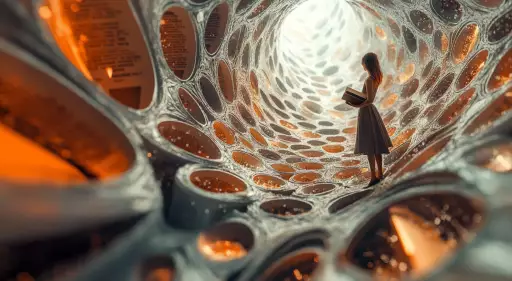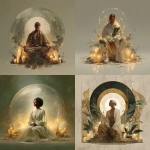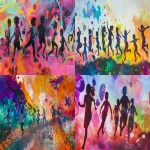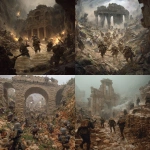Explore the Best AI Image Gallery

AI: The New Creative Partner in Graphic Design
The graphic design industry is undergoing a dramatic transformation, fueled by the rapid advancements in artificial intelligence (AI). No longer confined to the realm of science fiction, AI is now a tangible force, reshaping creative workflows and pushing the boundaries of whats possible. This blog post delves into the multifaceted impact of AI on graphic design, exploring its diverse applications, ethical considerations, and the exciting future trends that lie ahead.
AI-Powered Design Tools: A New Arsenal for Creatives
AI-powered design tools are emerging as invaluable assets for designers of all levels. These intelligent platforms leverage machine learning algorithms to automate repetitive tasks, generate creative content, and offer personalized design suggestions. Some prominent examples include:
- Logo Design Generators: AI can analyze brand guidelines and generate multiple logo concepts tailored to specific industries and aesthetics.
- Image Editing and Manipulation: Tools powered by AI can automate tasks like object removal, background replacement, and image enhancement, freeing up designers to focus on more strategic aspects of their work.
- Typography Optimization: AI algorithms can analyze text content and suggest appropriate fonts, sizes, and layouts to enhance readability and visual appeal.
- Color Palette Generation: AI-powered tools can analyze images or concepts and generate harmonious color palettes that align with specific branding guidelines or design moods.
Beyond Automation: AI as a Creative Collaborator
The potential of AI extends beyond simple automation. AI can act as a true creative collaborator, assisting designers in exploring new ideas, generating innovative concepts, and pushing the boundaries of their imagination.
- Concept Generation: By analyzing vast datasets of images, designs, and trends, AI can generate novel design concepts that may not have been conceived by human designers alone.
- Style Exploration: Designers can leverage AI to experiment with different design styles and aesthetics, quickly iterating through various options to find the perfect fit for their project.
- Personalized Design Experiences: AI can analyze user preferences and generate personalized design solutions tailored to individual needs and tastes.
Ethical Considerations in AI-Driven Design
As AI becomes increasingly integrated into the creative process, its crucial to address the ethical considerations that arise.
- Bias in Algorithms: AI algorithms are trained on vast datasets, which can contain inherent biases that may perpetuate societal stereotypes or inequalities in design outputs.
- Copyright and Ownership: Questions surrounding copyright and ownership of AI-generated designs need to be carefully considered, as the creative process becomes increasingly collaborative between humans and machines.
- Transparency and Explainability: Its important to ensure that the decision-making processes of AI algorithms are transparent and explainable, allowing designers to understand how their creations are being influenced.
The Future of AI in Graphic Design
The future of graphic design is undeniably intertwined with the evolution of AI. We can expect to see:
- More Sophisticated AI Tools: AI algorithms will become even more powerful, capable of generating increasingly complex and nuanced designs.
- Personalized Design Experiences: AI-powered tools will enable designers to create highly personalized experiences tailored to individual users preferences and needs. \n
- Cross-Platform Collaboration: AI will facilitate seamless collaboration between designers, clients, and other stakeholders across different platforms and locations.
As AI continues to advance, graphic designers who embrace its potential will be well-positioned to thrive in this evolving landscape. By leveraging AI as a creative partner, designers can unlock new possibilities, enhance their workflows, and push the boundaries of visual communication.


](https://images.ai-img.art/thumbnails/150/44b76c49c47b4c47f13eac7883c63827d3f89aa77fe64ce0cbecb9d3ce434499.webp)





























](https://images.ai-img.art/thumbnails/150/47d44e177f427ea6b32f96ea225db96c5158850a0cf01d1bad93e45dd4594430.webp)







](https://images.ai-img.art/thumbnails/150/c48401bc3fad7ff7f2dbd37b894d3f53cb42d5072dfacb8bfdcdeeef28a29b04.webp)

](https://images.ai-img.art/thumbnails/150/c2241c1eabdcb7b9a98be19a7e8d850b6cffe0e0c91c1ccda8dd807e2a96b187.webp)






](https://images.ai-img.art/thumbnails/150/09ccae5e68e2b6da6b5da87ef69f7eb09e80c99ca39ba886c5c3773cbb3b89ba.webp)